Subtraction Within 1000
Definitions
Have you ever given away some of your toys or candies to a friend? When you do that, you're subtracting! Let’s see: if you have 237 cubes, and you give 114 cubes to your friend, how many cubes do you have left?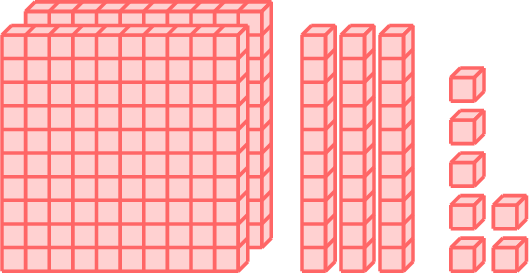 \(-\)
\(-\) 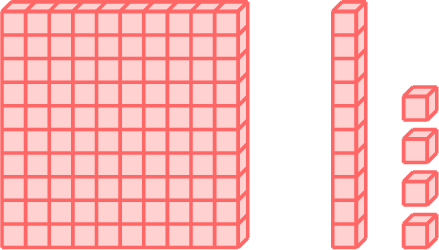 \(=\)
\(=\)
 \(-\)
\(-\)  \(=\)
\(=\)
Counting each cube individually would be quite cumbersome, especially with larger numbers. In such cases, column subtraction is a more efficient method.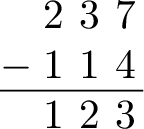
 \(-\)
\(-\)  \(=\)
\(=\)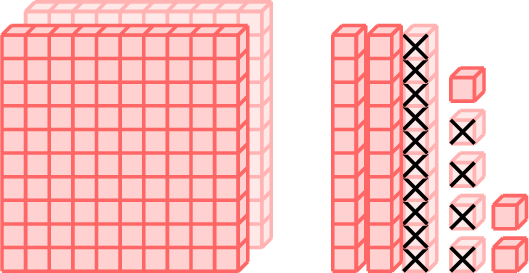

 \(-\)
\(-\)  \(=\)
\(=\)
Definition Subtraction
Subtraction means taking something away. When we subtract, we find out how many are left.
- The \(-\) symbol means "subtract."
- The \(=\) symbol shows that the two sides are the same.
- Numbers: $$237 - 114 = 123$$
- Cubes:
 \(-\)
\(-\)  \(=\)
\(=\)
- Words:
two hundred thirty-seven minus one hundred fourteen equals one hundred twenty-three - Subtraction Using Columns :

Subtraction Using Columns
You have learned how to perform column subtraction using the borrowing method. This involves "borrowing" a ten from the neighboring column when the digit on top is smaller than the digit below. But today, we will discover another method: the compensation method.
The compensation method is based on the following principle: if the same number is added to or subtracted from both terms of a subtraction, the difference remains unchanged. This property allows us to simplify the calculation by transforming the numbers to make the subtraction easier.
The compensation method is based on the following principle: if the same number is added to or subtracted from both terms of a subtraction, the difference remains unchanged. This property allows us to simplify the calculation by transforming the numbers to make the subtraction easier.
Method Subtraction in Columns with Compensation
To calculate:\(32 - 14\)
- Step 1: Set up the subtraction
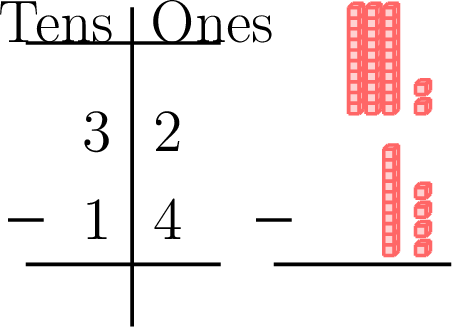
- Step 2: Compensate 1 Ten $$2 \text{ ones} - 4 \text{ ones}$$There are not enough ones. You regroup \(10\) ones to make it \(12\). You compensate by adding 1 ten to \(14\), which makes it \(2\) tens.
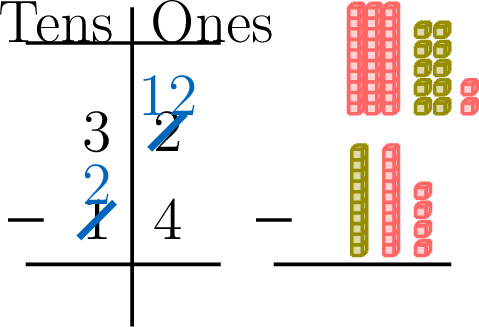
- Step 3: Subtract the ones $$12 \text{ ones} - 4 \text{ ones} = 8 \text{ ones}$$
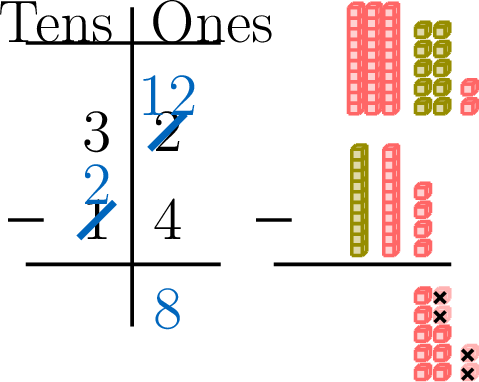
- Step 4: Subtract the tens $$3 \text{ tens (from 32)} - 1 \text{ ten (from 14)} - 1 \text{ ten (compensation)} = 1 \text{ ten}$$
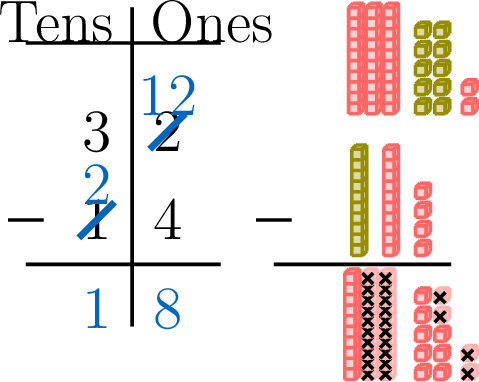
- Result: There is 1 ten and 8 ones. So, $$32 - 14 = 18$$